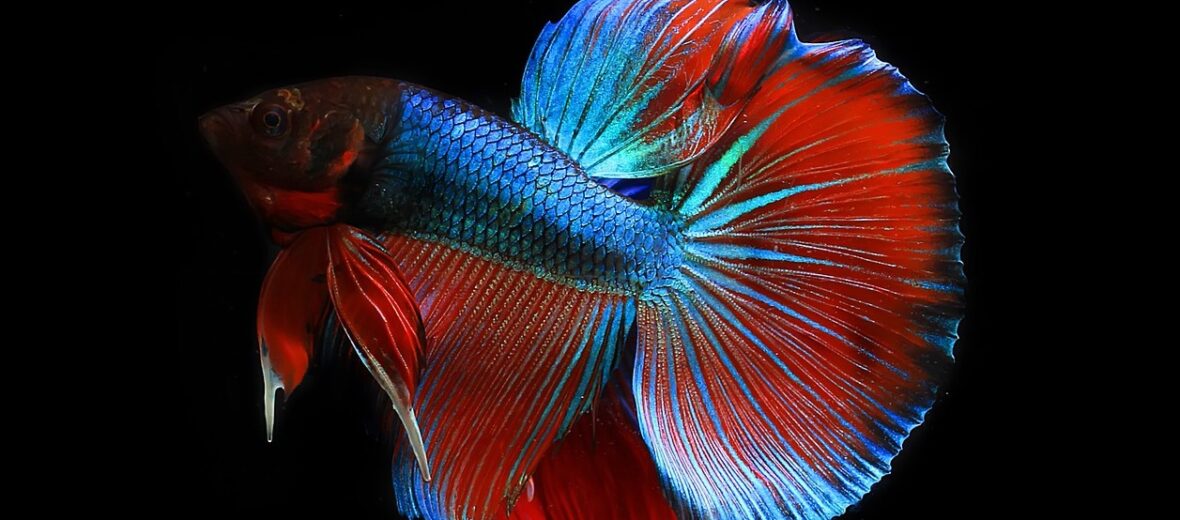
Typically, when most people think of Betta, they’re thinking of Betta splendens, aka Siamese fighting fish. However, the term Betta actually refers to many different fish species. We will be focusing on the spelndens. The Siamese fighting fish was given its name in Thai “ikan bettah”, which means biting fish! The Siamese fighting fish is known for its feisty temperament displayed towards other males and smaller species of fish and can often display very defensive behavior towards any animals that the Siamese fighting fish sees as a threat towards it. In 1840, Dr. Cantor named the fish Macropodus pugnax. In 1909, Mr. Tate Regan renamed the fighting fish Betta – likely in honor of a warrior-like tribe called “Bettah”
First the Stats…
Scientific name: Betta splendens
Length: Up to 3.1 inches plus their tail
Lifespan: Up to 5 years
Now on to the Facts!
1.) The Betta is an “anabantoid” which means they have a special organ called the labyrinth organ (located just above the gills), which allows them to breathe air from the surface. This is what allows them to survive in waters with such low oxygen content, such as shallow rice paddies, stagnant ponds, or even polluted waters. They can even survive outside of water for short periods, provided they’re kept moist. Because Betta fish sometimes live in water with low oxygen, this doesn’t mean they prefer it… and it also doesn’t mean Bettas should be kept in small vases with flowers.
2.) Bettas, especially the males, are territorial and will instantly attack other males (this isn’t always “to the death”, as commonly thought, although their fight can cause serious injuries. However, female Bettas can live together and male Betta fish can usually live with other species of fish.
3.) The brightly colored fish you see in pet stores or online got that way via selective breeding. Did you know that in the wild, Bettas are a dull brown or green color and their fins are smaller and much less flamboyant?
4.) These fish originally hail from Siam, the nation that became Thailand in the mid 20th century. The fish are native to the central part of the country, but there are also known populations further north, south, and in nearby countries like Laos, Vietnam, and Cambodia.
5.) In the wild, they eat insects that land on the water’s surface and insect larvae in the water, along with algae. They also eat bloodworms and shrimp.
But wait, there’s more on the Betta!
6.) Male Bettas build nests out of bubbles and once the female releases the eggs (during their elaborate courtship ritual) the male gathers them in his mouth and “spits” them into the nest. Because creating bubble nests is an instinctive behavior, your fish will likely build a bubble nest even in captivity without a female present.
7.) They are also smart! They can learn to recognize their owners as well as perform tricks, like following your finger around the bowl, swimming through hoops, or pushing a ball into a goal.
8.) Due to its small size, bright colors and long, attractive fins, the Siamese fighting fish is preyed on by many other animals. The predators of the Siamese fighting fish include larger fish, cats, newts, salamanders, birds and humans who catch the Siamese fighting fish to keep in tanks at home.
Did you know…?
Depending on the species, some adult male Betta fish (the Akar) can grow as much as 5 inches in length. The average length of a male Betta is 3 inches long!
9.) Before the 1800s local children of these areas would capture up to 50 fish per hour. These were then used in fighting competitions (usually the biggest strongest fish would win), giving bragging rights to the owner of the triumphant Betta. The winning Betta would go on to fight again and again until it was defeated; which typically meant death.
10.) Did you know, the fins of the Betta are not only beautiful, they’re useful? Their fins contain nerve cells, muscles, and even taste buds!
Now a Short Betta Video!
Want to suggest a critter for me to write about? Let me know here.
Learn more about all kinds of cool critters, right here!
Some source material acquired from: Wikipedia



